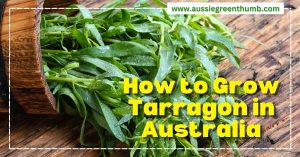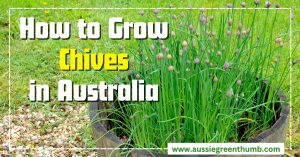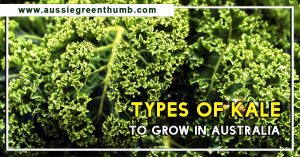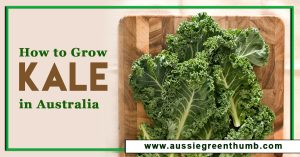Eucalyptus leucoxylon, yellow gum or white ironbark to most of us, is the hardiest red-flowered Eucalyptus you can grow, able to withstand frosts down to -14°C, and brief temperatures of -20°C without damage. That makes it an incredibly popular plant around the world, but not particularly useful here in Australia outside of its native range.
Its unique profusions of red flowers from sharply defined hypanthia (the cups at the base of the flower) are delightfully structured. And if you’re able to grow it without risk to other species where you are, it would make an outstanding tree.
To that end, I’ve put together a simple guide on growing this spectacular native tree, with guidance on how and where to plant it for the best effect.
More...
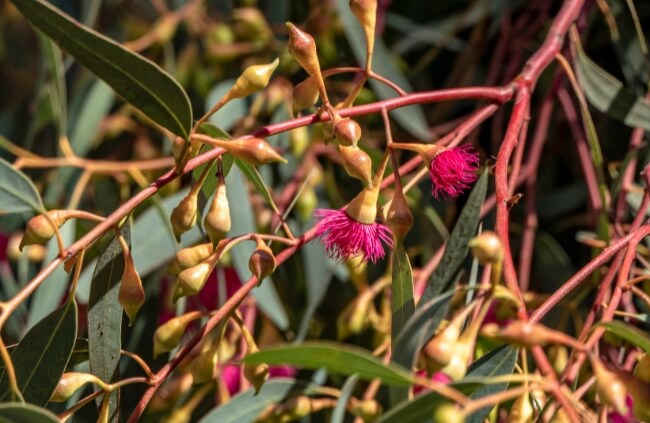
Family: | Myrtaceae |
|---|---|
Genus: | Eucalyptus |
Species: | E. leucoxylon |
Common names: | Yellow gum, blue gum or white ironbark |
Origin: | Australia |
Location: | Outdoor |
Type: | Trees |
Growth: | Typically up to 30m tall |
Sun requirements: | Full sun |
Foliage colour: | Grey-Green, silvery underside |
Flower colour: | Pink or white |
Flowering: | Predominantly early spring, but year-round |
Edible parts: | None (some medicinal use) |
Maintenance level: | Low |
Poisonous for pets: | Entire plant is toxic to cats and dogs |
What is Eucalyptus leucoxylon?
Commonly called yellow gum, white ironbark, and blue gum, this vividly red-flowered Eucalyptus is Eucalyptus leucoxylon. The tree itself is fairly average for a eucalyptus, with elongated lanceolate leaves, twisted peeling bark, and silvery-green foliage. But…
Its bark peels in fine, hair-like forms, giving it a gorgeous soft texture that covers its entire lignotuber (the shorter section of the trunk before the branches split off), which is more noticeable on most specimens than in many other species, as the lignotuber extends upwards.
Like all Eucalyptus trees, this species is used in various medicinal preparations.
White Ironbark’s Natural Habitat
White ironbark is native to Victoria, South-Eastern Australia, and South-Western New South Wales. There are several subspecies that we’ll come to in a moment, and each has a different habitat; from skeleton soils made of rock fragments with little to no accessible nutrition, to those growing in free-draining coastal sites and having to cope with saline earth and salty winds.
The species as a whole is tough, and its subspecies are no different, but this is where it becomes important to make a clear distinction. Eucalyptus leucoxylon is a successful self-seeder, capable of growing in varied climates.
The natural limitations to these parts of Victoria and NSW are fortunate for other species, so growing it outside of these areas puts other native species at risk.
Some cultivars are less invasive, but in general, aim to plant Eucalyptus that are native to your area to avoid confusion, and take pressure off your native fauna.
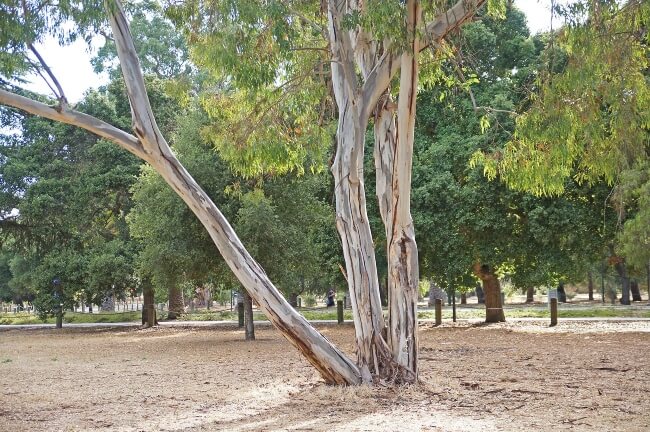
Source: Trees of Stanford
Common Uses for Yellow Gum
The most common uses for Eucalyptus leucoxylon are horticultural. While its essential oils are distilled from leaves for the production of cineole-based eucalyptus oils, there are few other medicinal uses outside of its purpose as a decongestant.
In terms of its horticultural merit, the main benefits come from the varieties of cultivars and subspecies available to hybridise, making it a useful plant for adapting to public gardens and parks.
Eucalyptus leucoxylon ‘Euky dwarf’, which I shall introduce properly later, is one of the most revered, growing to just 6m tall, making it ideal for a striking native display in park designs.
Globally speaking, where there are fewer limitations on where E. leucoxylon can be grown, it is the cultivar ‘Rosea’ that takes most of the accolades, as an especially hardy tree, capable of withstanding incredibly harsh winters.
In all cases, E. leucoxylon offers wildlife a home, and a food source with year-round nectar and evergreen canopies, providing protective food and nesting sites for native birds.
Identifying Eucalyptus leucoxylon
Eucalyptus leucoxylon has similarities with Eucalyptus sideroxylon and Eucalyptus melliodora, in terms of bark, height, and flower form, but is distinct by having three buds in each group of flowers.
While a single flower stem might hold several groups, each group, with its pointed gum nut, will have three flowers or nuts joined at their base. Identifying E. leucoxylon from a distance can be challenging, but there aren’t many with similarly vivid flowers, fared with such an unusually textured lignotuber.
Popular Eucalyptus leucoxylon subspecies, and cultivars
Eucalyptus leucoxylon is a widely bred species, but also, thanks to its relative hardiness, finds itself naturally confined to certain pockets, where subspecies develop.
There are six recognised subspecies of E. leucoxylon, and several well-regarded cultivars, but those described below are the few which are readily available as garden plants.
1. Eucalyptus leucoxylon ‘Rosea’
Red-flowering yellow gum has the distinctive yellow stems and grey foliage of all Eucalyptus leucoxylon but with intense red flowers that spray out with spring energy for nearly twelve months of the year.
This manageable cultivar reaches around 12m in most gardens, regardless of its shape, and can flower through milder summers too, providing nectar for birds more than any other garden plant.
2. Eucalyptus leucoxylon ‘Euky Dwarf’
This cultivar is one of the most sought-after Eucalyptus trees in Australia. Growing to just 6m tall, which is tiny compared to natural forms of this species, and with looser foliage it makes a wonderful screening plant.
Its flowers can vary in colour, so try to buy a specimen in flower where possible as the pink form is just spectacular.
3. Eucalyptus leucoxylon subsp. megalocarpa
Perhaps the most underrated form of yellow gum is Eucalyptus leucoxylon subsp. megalocarpa. Megalocarpa translates as, essentially, massive flowers, which hints at its appeal.
As well as having significantly larger, more blousy flowers than other E. leucoxylon varieties, it grows to a height of about 8m tall, with a canopy of around 8m wide. The eventual shape is incredibly tidy and offers shade all year round.
4. Eucalyptus leucoxylon subsp. connata
It’s difficult to distinguish Eucalyptus leucoxylon subsp. connata from E. leucoxylon itself, other than subtle differences in bud shape, but look for acid-yellow stems and creamy-yellow flowers.
Multi-stemmed forms of this tree look similar to the rest of the species, but when it’s grown as a standard, it has a slightly taller habit, which is taller rather than wider.
For more options to choose from, check out our compilation of types of Eucalyptus to grow in Australia.
How to Grow Eucalyptus leucoxylon
Whether you’re starting from scratch, or looking for fixes to common problems, we’ve got you covered. White ironbark, thankfully, is a fairly simple native tree to grow, but there are some things you can do to support their growth.
In particular, if you do plan on growing your own from seed, or cuttings, you’ll need to follow the guide below quite closely. But in stark contrast, when planting yellow gum into the garden, there’s very little that can go wrong.
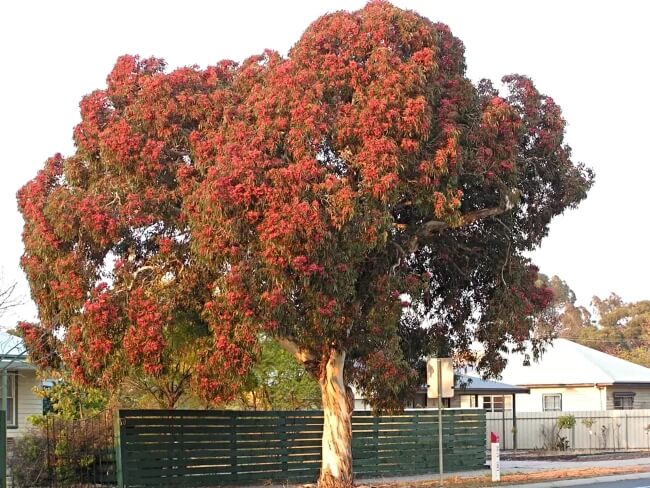
Source: Leafland
Ideal Conditions for Growing White Ironbark
Eucalyptus leucoxylon grows best in full sun, on sandy loam, with regular but free-draining moisture. It is drought-tolerant and can withstand coastal conditions with ease.
Sounds easy right? Well, it kind of is, but there are some considerations to make. For example, sandy loam is ideal, but you can adapt other soils to suit, and while these trees are happy with coastal exposure, they’re not completely hardy and really dislike cold winds.
Soil & Drainage
The best soil conditions for eucalyptus, in nearly all species, are poor, free-draining soils, with regular rainfall. That’s not quite the case for yellow gum, which actually likes a decent bit of nutrition.
We’re not talking cultivated land here, just a reasonably moisture-retentive sandy loam.
For gardens with clay soils, a good few bags of soil improver will get it up to scratch, and don’t worry if you’ve got a skeletal, rocky, soil with no goodness at all. It’s still possible to grow these trees, but it will take longer for them to root, and you’ll need to water for longer after planting before they truly establish.
Light & Temperature
White ironbark is, as a rule, should be considered to be hardy down to about -5°C. However, some varieties, ‘Rosea’ in particular, are known to be hardy right down to -14°C, and even -20°C in exceptional circumstances.
Their summer temperature range can include droughts, but try not to let the soil dry out completely around the base of young trees.
Shelter
Eucalyptus leucoxylon copes well with exposure, but it doesn’t like cold winds. Salty winds and coastal conditions are absolutely fine, and warmer inland winds won’t usually affect these natives.
In fact, if you’re growing a smaller, slower-growing variety like ‘Euky Dwarf’, you can grow it in a container. We’ve got one in a rolling planter that gets coppiced and moves around the garden for natural screening.
Thankfully it doesn’t get cold enough here to have to move it under cover, but if it's something you need to consider, a large rolling planter might be the solution for you.
Planting Eucalyptus leucoxylon
Planting white ironbark is straightforward, so long as you’ve prepared a well-suited soil mix for it. Check the guidance above for soil structure and drainage requirements, and adjust any heavy clay or loose sand accordingly. If you have moisture-retentive loam, dig through plenty of sand, grit, or shale to add drainage.
There is no real guidance for planting eucalyptus trees, because they adapt to their circumstance. White iron barks grow, like most Eucalyptus, from lignotubers.
The tubers can be primarily underground, or overground, depending on the species. Some are swollen at the base of a multibranched tree, others look largely like a typical trunk.
Their purpose is to adapt. In the aftermath of bushfires, lignotubers will regrow branches and leaves along their length. They are also the reason it often looks like four eucalyptus trees are growing right next to each other when the lignotuber is just planted below the soil level.
How to Propagate Eucalyptus leucoxylon
Eucalyptus leucoxylon can be grown from seeds, cuttings and grafted plants. Cuttings can be very unreliable, but sowing or grafting is well worth a try.
To choose which method is right for you, consider what you have available, and the time you have. For example, if you’re propagating for your own needs, there’s no point starting experiments with grafting, as the rootstock takes several years to grow before you can begin.
Cuttings are worth a try if you are coppicing eucalyptus, as you have the material available anyway, but sowing seeds, thanks to the high number of seeds in each gum nut is probably the most efficient, in terms of space and time.
Follow the guides below for both propagation methods.
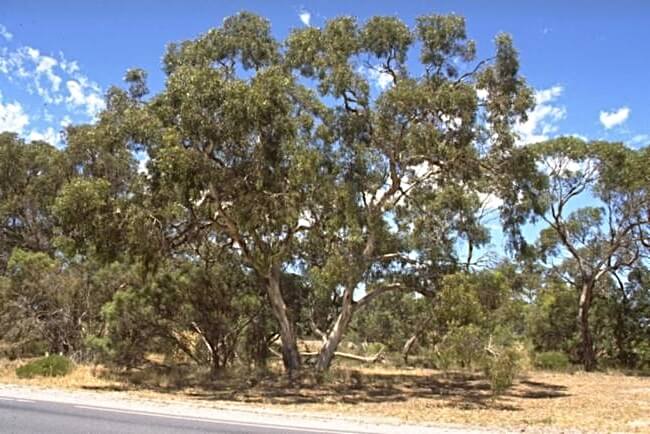
Propagating Yellow Gum from Seeds
The most effective method for sowing Eucalyptus leucoxylon is to scatter seeds into a bag of dry sharp sand (about 1 teaspoon of seeds to two tablespoons of sand) and then put the sealed bag in the fridge for a month.
This period of cold puts them through a winter, so that when you scatter the sand, infused with chilled seeds, onto a thin layer of well-drained seed compost, they are much more likely to germinate quickly. And when a seed germinates quickly, it is less likely to rot in the damp earth.
Sow into trays of damp seed compost and leave somewhere bright for a few weeks. Germination usually takes around two weeks but can take up to six.
Propagating Eucalyptus leucoxylon from cuttings
Eucalyptus of all species are difficult to grow from cuttings, but I would always add to that advice: If you’re coppicing eucalyptus, there’s no harm in trying a few cuttings. Some might take.
- In late winter, or early spring, when you are coppicing Eucalyptus leucoxylon, cut back the branches as you usually would, and place the cut ends in a bucket while you work (this just stops them from drying out so you don’t have to rush).
- Once you’ve finished pruning your white ironbark, fill several 10cm pots with perlite or a very, very, gritty potting mix.
- Strip large leaves from coppiced branches, and trim them to 15cm sections, with diagonal cuts just below nodes/buds.
- Dip the base of each cutting in rooting hormone and insert one into each corner of each pot.
- Place the pots in a warm cold frame or greenhouse at around 25-32°C, watering when the soil begins to dry out.
- With any luck, one or two will strike and you’ve got new plants for very little effort.
Grafting White Ironbark
Grafting can seem daunting, but it is basically just taking cuttings, and instead of placing them in compost or perlite, you use a root stock from another similar plant in the same genus to kick-start rapid growth.
Take the cuttings as you usually would, and on the root stock (having removed the top growth, or thinned it), make a notch to insert the cutting. The cutting should have an angled cut at the base, so it pairs tightly with the internal flesh of the rootstock.
Once inserted, tightly wrap tape or twine around the join to keep it in place, and then wait. After a few weeks, the buds should start opening out, and after twelve months it should be growing with the same vigour as any tree with a similarly established root system.
How to Care for Yellow Gum Trees
There is little ongoing care for established yellow gum trees, but different subspecies and cultivars have different uses and are more varied than many Eucalyptus.
‘Euky dwarf’, for example, can be grown in a variety of ways, and will require repotting only once every five to eight years, while Eucalyptus leucoxylon subsp. connata, grows 12-15m tall and would quickly break out of its container.
Pruning Eucalyptus leucoxylon
Forget about mulching or feeding Eucalyptus leucoxylon. It just doesn’t need it. Instead, focus its energy on shaping it into the tree of your dreams. Coppicing will provide excellent screening, with shoots that grow up to 1.5m per year, and offer taller privacy screens when pollarded too.
Mature trees don’t require pruning, but if their limbs are creaking it's best to remove some growth as they can become weak in high winds.
Eucalyptus leucoxylon Pests and Diseases
There are some specific pests to Eucalyptus that are worth noting, but very few that will cause long-term damage to mature trees. Most harmful pest damage on Eucalyptus leucoxylon occurs in the first few years, while the tree is developing roots, and branches are still pliable.
There are also no specific diseases that affect Eucalyptus leucoxylon more than others, but root rot is a common issue for young trees.
Remember, when planting, that these trees prefer well-drained soils. That means they dislike sitting in standing water. Partly, this is because as water saturates the soil, it makes nutrients accessible to the roots, as well as acidic.
In terms of mature trees, look out for signs of canker, crown rot or termites.
White Ironbark Frequently Asked Questions
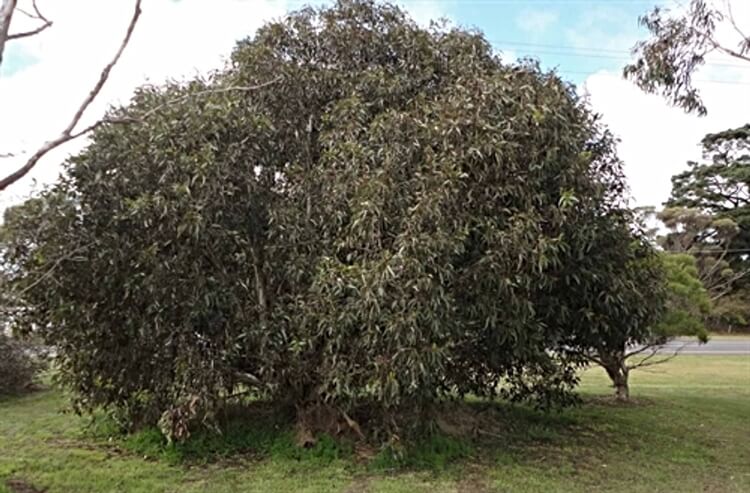
Source: ERA Nurseries
How tall is Eucalyptus leucoxylon?
Eucalyptus leucoxylon is 30m tall at its highest, but some cultivars will grow to an ultimate height of just 6m. Choosing the right tree for the right spot is essential with Eucalyptus, and that’s never more important than with white ironbark.
How do you identify Eucalyptus leucoxylon?
Identifying yellow gum (Eucalyptus leucoxylon) is all about its flowers, which are wide sprays of either pink or white, with open black centres. The trunks grow from lignotubers, with flaking bark, and different subspecies have varying stem colours (though the mature bark is nearly always grey with murky-coloured yellow-brown patches). Pale green, silvery foliage is long and pointed.
What are the buds of Eucalyptus leucoxylon like?
The buds of Eucalyptus leucoxylon are split into two halves. The base, connected to its stem, usually has a deep groove separating its semi-spherical form from a pointed tip.
Does Eucalyptus leucoxylon spread and multiply?
Eucalyptus leucoxylon will spread and multiply in other parts of Australia, where its 30m tall canopy can shade out other native plants. There are alternative species you can grow depending on where you are in the country, but shorter cultivars like ‘Euky Dwarf' offer a more sustainable option, that is better suited to gardens, and less likely to upset ecosystems.
Where should I plant Eucalyptus leucoxylon in my garden?
Yellow gum is well suited to gardens, particularly the shorter varieties like ‘Euky Dwarf’ or ‘Rosea’. Their roots are not invasive, so they can be planted anywhere in the garden that is more than 15m from solid structures.
Like all Eucalyptus, their roots can lift paving flags, but are unlikely to damage poured concrete.
Why is Eucalyptus leucoxylon called ironbark?
The name ironbark refers to several Eucalyptus species used for their exceptionally tough wood, but the name is perhaps more appropriate as a reference to their resilience as a species, which is in part down to the polyphenols contained in their bark, that inhibit fungal growth – especially an iron armour for the tree.
How well does Eucalyptus leucoxylon burn?
Eucalyptus leucoxylon isn’t an exceptionally better or worse firewood compared with other Eucalyptus, but it is still a great firewood, with a high burning temperature.
Embrace the Natural Beauty of Eucalyptus leucoxylon in Your Garden
It might not be suitable for every part of the country, but if you can grow it, you should. This gorgeous Eucalyptus species is fast growing, and offers uniquely textured bark, with colourful blooms for most of the year. Its pink flowering forms are drastically underrated and can be found as small trees, growing to around 6m.
There are, admittedly, some reasons to avoid growing this species of Eucalyptus, but white ironbark is a great garden plant, and easily worth a shining spot in your garden. Regardless of whether you start them from seed, or buy a young tree to get going, Eucalyptus leucoxylon is easy to grow, and even easier to care for.
Published on January 27, 2024 by Nathan Schwartz
Last Updated on March 4, 2024

